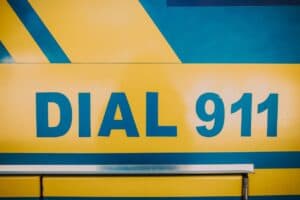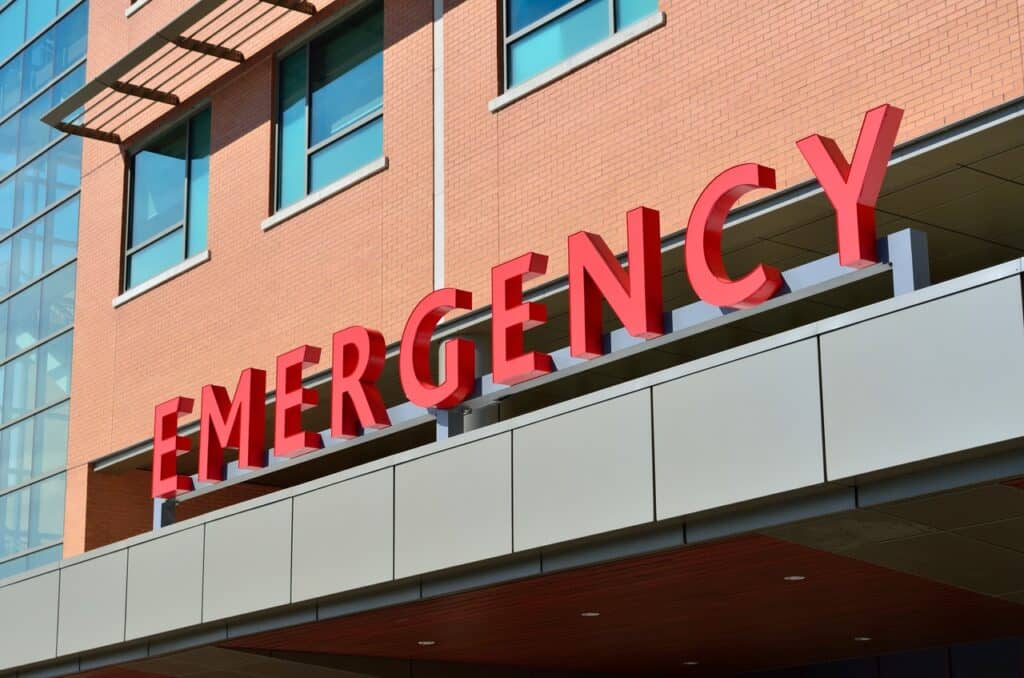In life the unexpected always happens. And unfortunately many of these unexpected things involve us financially. I’m sure you’ll agree with me on this one. Life gets expensive when you least expect it. It’s why each of us need a pile of money set aside just for emergencies. This is called an emergency fund and let’s discuss eight great tips about starting one today.
There is a bit of debate out there about how much of a fund you should start with and build up to. Then there’s questions about where to “hold” money in that fund. Well get to those in a bit, but let’s start small and get back to the basics. Let’s answer a few simple questions first…
What Exactly Is An Emergency?
The first tip, of course, is identifying what an emergency actually is, right? Seems like this is a simple question that deserves a simple answer. Well, not so fast. Your idea of an emergency may not be the same as mine. And this is an important first step to identify because it determines what we’re going to do with this “fund”.
Let’s not get too carried away here with the definition, but let’s keep it fairly simple and categorize it as something that could cause your financial life to be severely impacted. Something that can damage your finances or possibly kick you out of your house or cause you to lose your job. You get it, it’s something
Being in serious high interest debt can also be pretty damaging to the finances as well. This can certainly be construed as damaging to your financial life as well. However, many of us tend to want to label other things that aren’t as damaging as “emergencies”. Think of an emergency night out with friends, an emergency coffee, or an emergency new sofa. These are obviously not the same thing. And although I’m being a bit flippant here, the point is, we can all justify dipping into this account when we don’t correctly identify its purpose right from the start.
You have to have it’s definition solid in your mind. It has to be something important. For some, you may have to call it a “disaster fund”.
Remember, an emergency is usually unexpected. It’s often unavoidable. You’re forced to deal with it. And it’s pressing. Meaning, you have to deal with it in a timely manner so you need cash handy at a moments notice.
Give It Meaning To You
We’ve covered some of this a little bit. But let’s go deeper…
It’s for something that’s really important, that could significantly impact our lives if we don’t use it. The problem for me is that the word emergency just isn’t strong enough. We hear it all the time. It’s a frequently used word so it’s lost a lot of it’s true meaning. For myself, despite it’s label, I would still find myself dipping into this account for various reasons. And the justification: I would “pay it back later”. An “emergency” just had too many variables. So, it got used for things that truly weren’t emergencies. And for that reason I don’t call it a rainy day fund either because it doesn’t motivate me enough.
So I had to give it a deeper purpose or meaning to me. It’s my life-raft. It keeps me afloat. If your ship has sunk, this fund keeps you out of the cold harsh water. 
Call it a Life-Raft Fund if you need to. How about a Disaster Fund or a Survival Fund? A Crisis Fund? Find purpose within it so it serves the reason it’s there: to keep you afloat.
Identify Why You Really Need One
Hopefully this is a rhetorical question and you can easily answer this one. But it may hit home a bit more when you realize that despite “everyone” knowing about it, relatively few actually have a fully funded emergency fund.
You see, there are numerous studies out there that show many of us can’t even cover small emergency expenses. According to Bankrate, over half of us can’t cover a $500 with cash. Many would have to handle the unexpected bill by using their credit cards.
You see, we’re a nation already in significant personal debt. We have car debt, student loan debt, and credit card debt. We also have a hard time paying that debt off. There never seems to be enough money. So we have little or no emergency funds as a result. And when a disaster happens, we have to put those expenses on, you guessed it, credit cards! This means we’re now further in debt. Or it could cause you to pull money from your retirement fund. And guess what that causes? For you to become poorer vs increasing your net worth.
So by building up an emergency savings account, you can instead pull money (when absolutely needed) from that account instead of going into further debt.
Here are other reasons why you really need one:
- In case you lose your job
- To pay your rent or mortgage so you’re not literally living in a tent
- Medical emergencies (yep, I use it for my pets as well, they’re my family too)
- Fridge goes out, car won’t run, roof damage needs fixed
- Dishwasher quit working – ok, let’s revisit #2 (meaning/purpose) – I’ll let you use your own judgement call but you “could” do them old-school, right? See what I mean about identifying “emergencies”?
How Do You Build One?

- Keep it separate from your other accounts. Don’t try to keep it within your checking. Make a separate account altogether.
- Automate it! Have money directly deposited to this account on a regular basis (even if it’s small). Figure out how much you can start with and just start! Even if it’s only $20.
- Make it consistent. Eventually this $20 will grow into $200 then $2,000. Over time these gradual additions will really build up.
- Access it online. The best way is either to link a savings account with your checking (where you can easily move funds over) or a separate account not linked at all. This depends on your will power. If you’re tempted to get into this account, the harder you make it to access the money, the better off you’ll be (just make sure you can still use it, that’s is liquid and accessible enough).
- For those will absolutely no willpower: create a separate account you physically have to go in to get the cash. This has a lot of negatives (such as accessibility) but it might keep your emergency funds intact.
- The best course of action is to have it out of sight as much as possible. Keep the temptation to spend low.
- Keep it liquid. Remember you will possibly need to actually access this money in an emergency. Don’t keep it “out of sight” or too difficult to get to where it defeats its ultimate purpose: to keep you afloat and out of debt. Balance the “out of sight” concept with what works for you
- Use a “keep the change” option at your bank. Some banks offer a savings account where they will “round” up your spending on your checking to the next dollar and put it in this savings account. Say for instance you spend $8.49 on something, they will take out $9 from your account, moving the excess $0.51 cents to the savings account. This is a great way to help build your emergency fund and it’s “hands-off”.
- Get creative. Don’t seem to have money to put into this account? Seems like you’re always short on cash? Get creative with coming up with the money. Remember, this is your Crisis Fund, it has to be funded.
- Yard sale! Sell something if you have to. Do the old-fashioned yard sale if you must (trust me, there are items you can probably let go and it can easily raise a few hundred dollars!).
- Get a part-time job: yeah, I know, this isn’t on your dream list. But it’s a great way to build up an emergency savings account.
- Get a side-hustle: what’s the difference? Well, consider this one less “permanent” (although it doesn’t have to) than the part-time job. Use your natural talents to build wealth. Sell things on Etsy. Drive when you want for Uber or Lyft.
- Trim the budget: yep, you heard that right. Cut out unnecessary subscription services, eat in vs out, and look at the myriad of other items in your budget you absolutely don’t need right now.
- Use extra cash. If you get a bonus from work, work overtime, or get a tax refund, this is a great time to bolster that emergency fund.
- Your credit card is not your emergency fund! I know, bummer, right? You will owe more money than what you’re using because of excessively high interest fees. Avoid this at all cost. Build the emergency fund instead!
Where To Hold Your Money
The best place to store your money for this type of fund is in a place that is liquid and safe. So, a high-yield bank account is a good place. Money market accounts are also good because they’re similar to savings accounts and offer higher yields on your money. Just be sure to investigate whether any account has fees associated with them.
- Some people like to use Certificates of deposit (CDs) because they may offer an ever higher interest rate, but be aware that this may tie up your money (and have penalties if you access your funds early). Some people will “ladder” these funds meaning choosing CDs with varying maturity dates so they have access to cash at different periods. This is not my favorite place to stash my emergency funds, however.
- Some people also use a Roth IRA as an emergency fund storage account. They will then invest those funds. Be warned, however. This may not be the best spot for an emergency fund because money here is usually invested in stocks or bonds and there are risks that it could lose value quickly. So, if you are going to use a Roth IRA, consider “laddering” your emergency fund here as well. Meaning consider having 3-4 months of living expenses in a high-yield savings account and the last 5-8 months in a Roth IRA (I would recommend keeping these funds as conservative as possible). And remember, Roth IRAs have special rules: you can access your “contributions” but not the earnings before 5 years and you’re over 59 1/2 years old. If you’re interested, look at this option very carefully before proceeding!
Again, just do your homework and discuss with a financial advisor because this is riskier than just leaving everything in a high-yield savings account. The benefit here of course is it uses after-tax dollars – dollars you can pull out without any penalty. Any gains are tax-free but can carry a penalty if those “gains” are drawn out before you’re 59 1/2 years old. So do your homework on this one.
Overall, I would plan on just keeping things liquid and safe and stick to the previous two options.
How Much Do You Need?
This is a question that gets different (but similar) answers. The best answer is: as much as you can (for now). Ultimately, a half-year living expenses is great.
Remember, this is your Crisis Fund, your Survival Fund. So get it started. Even with $20. But keep it going and keep it consistent. I personally like Dave Ramsey’s method of saving at least $1,000 to start. This is a great goal. However, for some, it may be out of reach or seem too hard to achieve.
So make it $100. Achieve that goal. Then keep going. And going. Pretty soon you’ll reach that $1,000. Some recommend tackling your debt first. But paying off debt only to have an emergency a month later (with no emergency fund established) will usually just get you into more debt. So it’s smart to get at least $500 built up.
For myself, I ended up tackling my debt while I build up my emergency fund. You’ll run into a lot of debate here. The math people might say this isn’t the best method. What I found is this: the best method is the one that is actually working for you. Then stick with it. Increase it gradually and be consistent.
Set a goal. It’s good to have a goal to achieve. It gives us purpose. But once achieved, it’s not wrong to set a higher goal. There are small emergencies (those costing a few hundred dollars like fixing your car) and big emergencies (costing thousands like repairing your roof). So, start with handling the small and work up to the big.
Eventually it’s nice to have 6-8 months of living expenses (money needed to pay the bills) set aside. But there are those who want a bigger cushion. Remember 2020? Well, many feel that an even larger emergency fund is a great idea. The investors out there will tell you that your money isn’t growing very well in these accounts so you shouldn’t build it too big, the the year of the Corona Virus told us that having a larger crisis fund might be a good thing.
For now, make this a sizeable emergency fund that will sustain you and keep you afloat when the storms come calling.
How Long Should It Take To Build?
Well, that depends on you and how driven you are. The best course of action is to get a few thousand dollars build up as quick as you can. Then grow it from there. But a good starting point is to start with $100 a month if you can (if not, start with $20 like I said earlier). Within a year you’ll have $1,200 and some change (counting minor interest).
For myself, 6 months was a reasonable goal to have a sizeable account. It gave me purpose without being too pushy, but “as quick as you can” is a better ultimate goal. In life, there are plenty of things that disrupt these goals. Life happens. For myself, it was fixes to the car. Debt repayment interfered with the speed as well. And planning for retirement, kid’s college, those unexpected trips out of town for family… you name it, it competes with it. Just make it workable for your personal situation.
When To Use Your Emergency Fund
Ah, now we get to what we all want to know! Hey, this money (now hopefully build up to a sizeable amount) is just “sitting” there doing nothing! Let’s remind you of what not to use it for:
- Vacations
- The newest phone/TV/electronic device you “must” have
- A newer car
- When you’re worried about missing out on something
- Non-emergencies (you get it by now!)
Review why you really need one (above) as a review. Hopefully, this is a bit more obvious now. It’s for those times when you really need the cash to stay out of debt and cover essential items to live. And even during those extreme times, trim all your costs as possible and preserve this fund as much as you can. Then build it back up again when possible.
Summary
As mentioned earlier, life throws all kinds of unexpected expenses our way. Sometimes all too frequently. Life seems like it’s always expensive.
There have been times when I’ve been hit by auto repairs, emergent home maintenance, and innumerable kids’ expenses that have either impaired or slowed down my emergency savings contributions. For some emergencies I’ve certainly had to dip into that emergency fund as well.
But what a wonderful feeling it is to have a cash reserve back up. For myself, it’s my Survival Fund. It’s my peace of mind. So, review these eight great points about starting your emergency fund today. Make this fund personable and applicable to your unique situation and financial expertise. There is no one right way to do this. You just have to do it!
Then enjoy having having less stress as you tackle life’s next challenges that come your way. Why? Because you’re financially able to handle these problems. Your life raft has kept you afloat.
Latest posts by David the Wealthy RN (see all)
- Five Negative Aspects of the 401(k) - July 19, 2023
- How To Think About Bear Markets - April 8, 2023
- Live Paycheck to Paycheck the Right Way! - December 26, 2022


 The best place to store your money for this type of fund is in a place that is liquid and safe. So, a high-yield bank account is a good place. Money market accounts are also good because they’re similar to savings accounts and offer higher yields on your money. Just be sure to investigate whether any account has fees associated with them.
The best place to store your money for this type of fund is in a place that is liquid and safe. So, a high-yield bank account is a good place. Money market accounts are also good because they’re similar to savings accounts and offer higher yields on your money. Just be sure to investigate whether any account has fees associated with them.